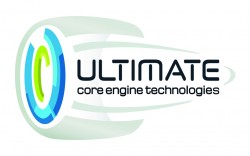ULTIMATE innovations make Flightpath 2050 targets feasible: Collaborative effort for breakthrough aero engine concepts
The Flightpath 2050 target of a 75% reduction in energy consumption and carbon dioxide emissions is extremely challenging. Even if a continued incremental improvement of state-of-the-art technologies is assumed, they cannot achieve this goal. It has therefore been estimated that an additional 30% reduction must come from radical new aircraft engine innovations. The ULTIMATE consortium has targeted such innovations and identified breakthrough technologies that address the three major loss sources in existing aero engines, which means that energy input is not used optimally. These loss sources are: combustor irreversibility, core exhaust heat and bypass exhaust kinetic energy, accounting together for more than 80% of the overall losses. Complementing the expected efficiency improvements of current technology concepts towards the 75% reduction target, five technologies have been identified within ULTIMATE as high added-value. These five technologies are about: constant volume combustion systems, intercooling, secondary combustion, bottoming cycles, and novel propulsor and nacelle designs. The concentration on these technologies finally resulted in eight innovative engine concepts which could have been developed by the ULTIMATE experts. ULTIMATE engine concept innovations • Intercooled core with pulsed detonation combustion and counter rotating Boxprop open-rotors for intra-European missions (Chalmers University and GKN Aerospace) • Intercooled geared turbofan with pulsed detonation combustion for intercontinental missions (Chalmers University and GKN Aerospace) • Open rotor with a nutating-disc topping cycle (Cranfield University and Rolls-Royce) • Turbofan with a closed-circuit bottoming cycle (Cranfield University and Rolls-Royce) • Turbofan with topping and bottoming cycles (Cranfield University and Rolls-Royce) • Ultra-thin adaptive inlet concept (ISAE and Safran Aircraft Engines) • Secondary fluid recuperator (SFR) concept (Aristotle University and MTU Aero Engines) • Composite cycle engine (CCE) (Bauhaus Luftfahrt and MTU Aero Engines) Concentrated experience matures technologies to TRL 2 “Decades of investment in advanced technology, supported by European programmes such as Clean Sky, have made the ambitious Flightpath 2050 target feasible. To reach the 75 percent reduction target, it is estimated that the last 18 percent will have to come from step-changing technology developed within ULTIMATE,” says Tomas Grönstedt, professor at Chalmers University and coordinator of the project. “Through previous collaborations of the ULTIMATE partners in other aeronautic projects, they have gained the most comprehensive experience in Europe on conception and evaluation of advanced aero engine architectures. In ULTIMATE, we have been using existing tools, knowledge and models in order to optimize and evaluate the five core concepts we identified. We are now on the way to mature these technologies to TRL 2 (Technology Readiness Level).” The whole article under: http://www.ultimate.aero/media/articles/files/ULTIMATE_press%20release_final_20180612.pdf Project website: http://www.ultimate.aero/ Project flyer: http://www.ultimate.aero/media/articles/files/ULTIMATE_A5-FINAL.pdf
Keywords
ultra low emission technology, aircraft turbine engine, aircraft engine, aircraft engine concepts, mid-century aircraft, flightpath 2050, aeronautics, European Aviation, smart transport, green transport, integrated transport
Countries
Germany, Greece, France, Sweden, United Kingdom



